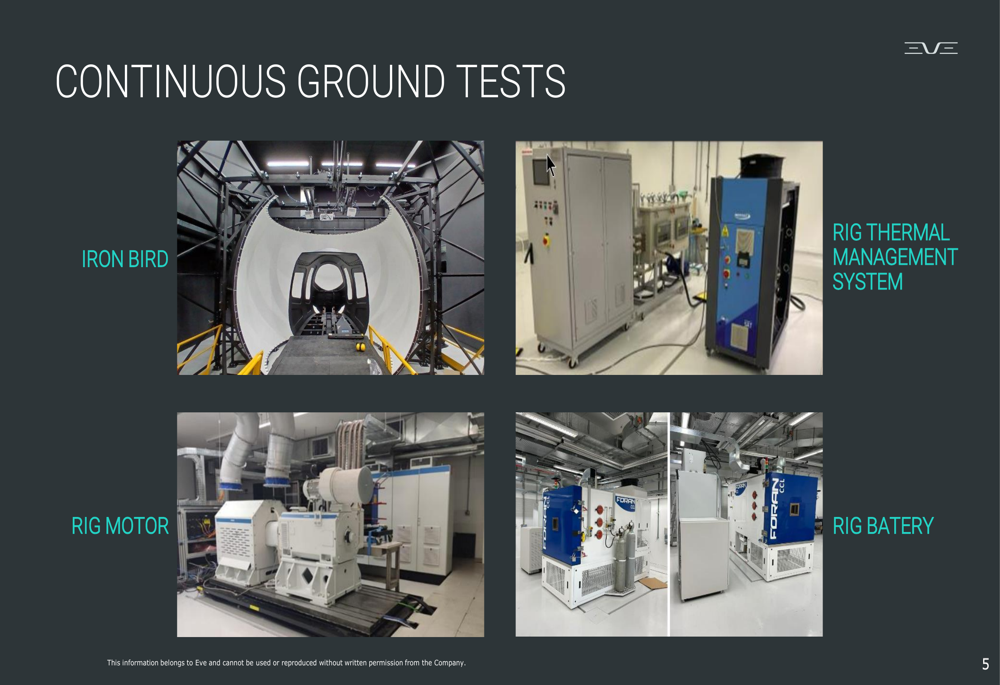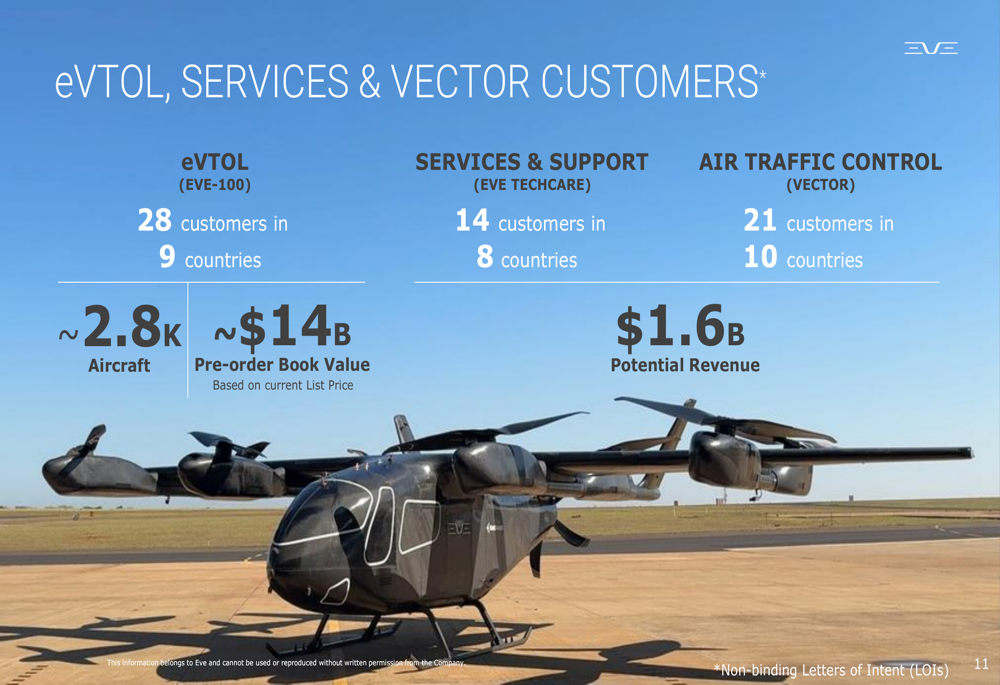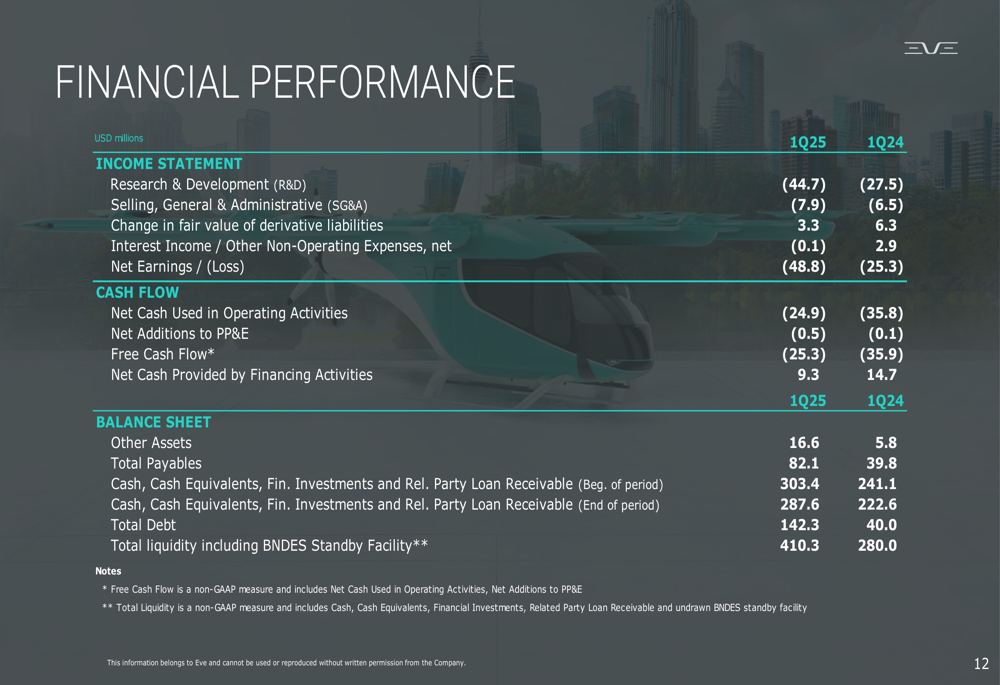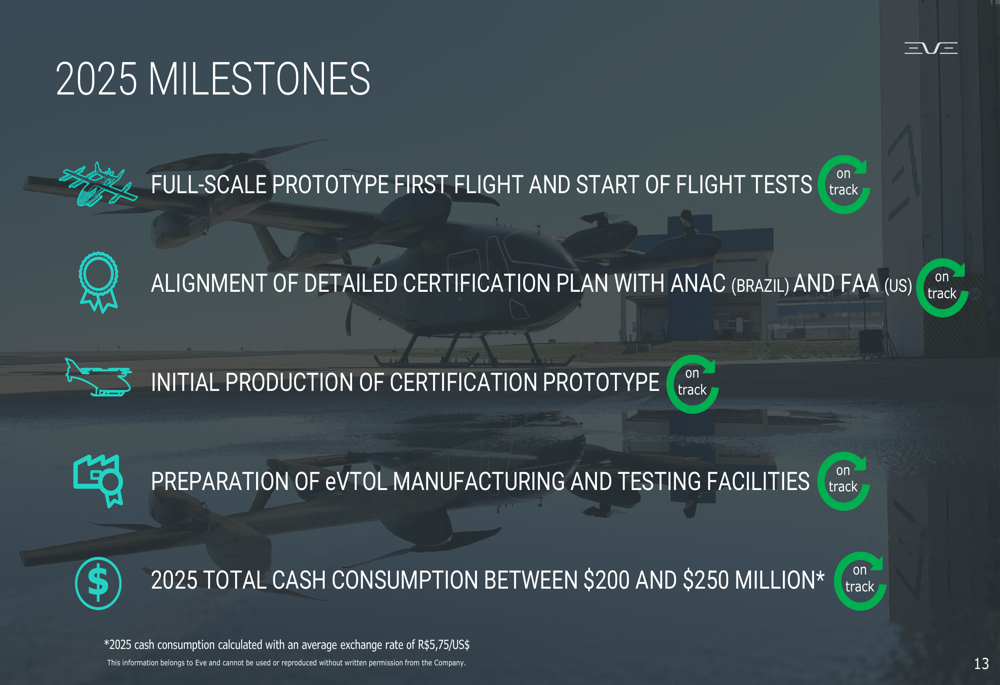Intel stock spikes after report of possible US government stake
Introduction & Market Context
Eve Holding Inc (NASDAQ:NYSE:EVEX) presented its Q1 2025 update on May 12, highlighting significant progress toward the first flight of its full-scale eVTOL prototype while reporting widening losses as development intensifies. The company’s stock has experienced volatility in recent months, trading at $3.88 as of May 9, 2025, up 1.84% but still well below its 52-week high of $6.09.
The urban air mobility developer continues to advance its ambitious development timeline while managing a substantial cash burn, maintaining what it claims is the largest order book in the eVTOL sector amid increasing competition in the emerging flying taxi market.
Prototype Development Progress
Eve’s presentation emphasized significant progress in preparing its full-scale prototype for its first flight, a critical milestone in the company’s development roadmap. The prototype has completed several essential ground tests, including ground vibration testing, high-intensity radiated field (HIRF) testing for electromagnetic interference insulation, and air-data system calibration.
As shown in the following image detailing the prototype’s first flight preparation:

The company reported that pusher motors have been successfully tested and installed, while lifter motors are currently undergoing testing before shipment and installation. This progress represents a significant step toward the prototype’s first flight, scheduled for mid-2025.
Eve is also conducting continuous ground tests using various test rigs to validate critical systems:

The company has developed a sophisticated flight simulator for engineering development, which allows testing of control laws, simulation of integrated system behavior, evaluation of flight controls, and assessment of pilot ergonomics to optimize the cockpit layout.
Supplier Engagement
Eve highlighted its expanding supplier network for the conforming vehicle, showcasing partnerships with several major aerospace suppliers. The presentation featured components from well-known manufacturers, reinforcing the company’s progress in establishing a robust supply chain.
The following image showcases key components from major suppliers:

These partnerships with established aerospace suppliers like Recaro, Liebherr, Honeywell (NASDAQ:HON), and Kasiglas demonstrate Eve’s ability to attract tier-one suppliers despite being a relatively new entrant in the aerospace market. The company is also preparing infrastructure for conforming prototype assembly at Embraer’s site in São José dos Campos, Brazil.
Customer Base & Order Book
Eve continues to tout its substantial order book, which represents a significant potential revenue stream if the company can successfully bring its eVTOL to market. According to the presentation, Eve has secured:

The $14 billion pre-order book value represents one of the largest in the eVTOL industry, though it’s important to note that these are conditional pre-orders that may be subject to cancellation or modification. The company’s diversified approach, which includes services and air traffic management solutions, appears to be resonating with potential customers across multiple markets.
Financial Performance
Eve’s financial results for Q1 2025 revealed accelerating expenses and widening losses as the company intensifies its development efforts. Research and development expenses increased significantly to $44.7 million in Q1 2025, up from $27.5 million in Q1 2024, reflecting the company’s push toward prototype completion and first flight.
The detailed financial performance is shown in the following slide:

The company reported a net loss of $48.8 million for Q1 2025, nearly double the $25.3 million loss in the same period last year. Despite the increased losses, Eve maintained a strong cash position of $287.6 million at the end of Q1 2025, up from $222.6 million a year earlier. Total (EPA:TTEF) liquidity, including the BNDES standby facility, stood at $410.3 million.
It’s worth noting that Eve’s total debt increased substantially to $142.3 million from $40.0 million in the prior year, indicating the company is leveraging debt financing to fund its development program. This aligns with the company’s previous earnings call where it mentioned raising $270 million in 2024 to enhance its liquidity position.
2025 Outlook & Milestones
Eve outlined several key milestones for 2025, all of which it reports as being "on track":

The projected cash consumption of $200-250 million for 2025 aligns with statements from the company’s previous earnings call, suggesting consistent financial planning despite the accelerating development pace. This substantial cash burn underscores the capital-intensive nature of developing a new aircraft and the associated certification process.
Conclusion
Eve Holding’s Q1 2025 presentation paints a picture of technical progress toward first flight of its full-scale prototype, backed by strong supplier and customer engagement. However, the company faces significant financial challenges with widening losses and substantial projected cash burn for 2025.
While Eve maintains a strong cash position for now, the increasing R&D expenses and total debt highlight the financial pressures of bringing a novel aircraft to market. Investors will likely focus on the company’s ability to achieve its first flight milestone on schedule while managing its cash runway effectively.
As Eve approaches critical development milestones in 2025, the company’s ability to maintain its pre-order book, advance certification efforts, and control development costs will be crucial factors in determining its long-term viability in the competitive eVTOL market.
Full presentation:
This article was generated with the support of AI and reviewed by an editor. For more information see our T&C.
